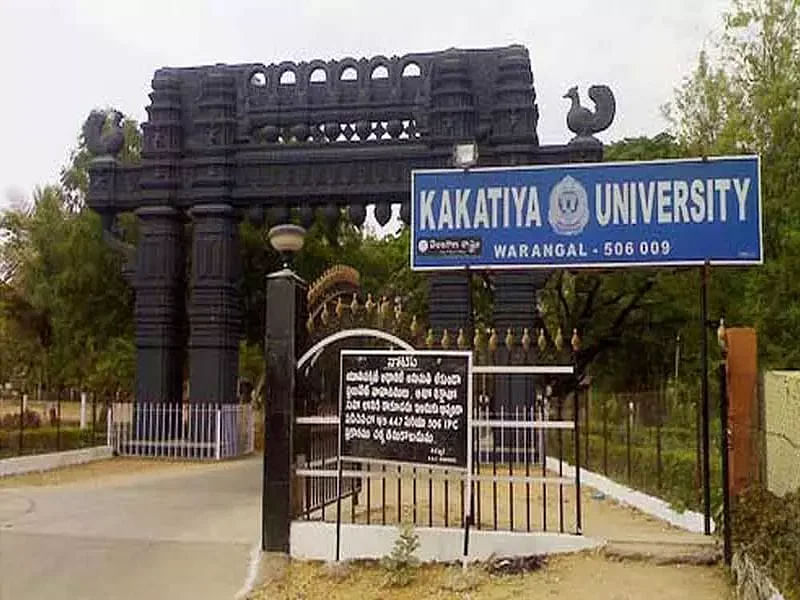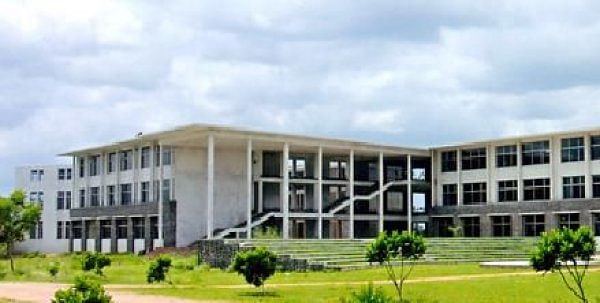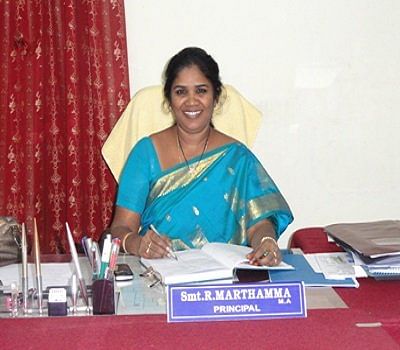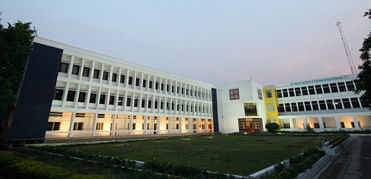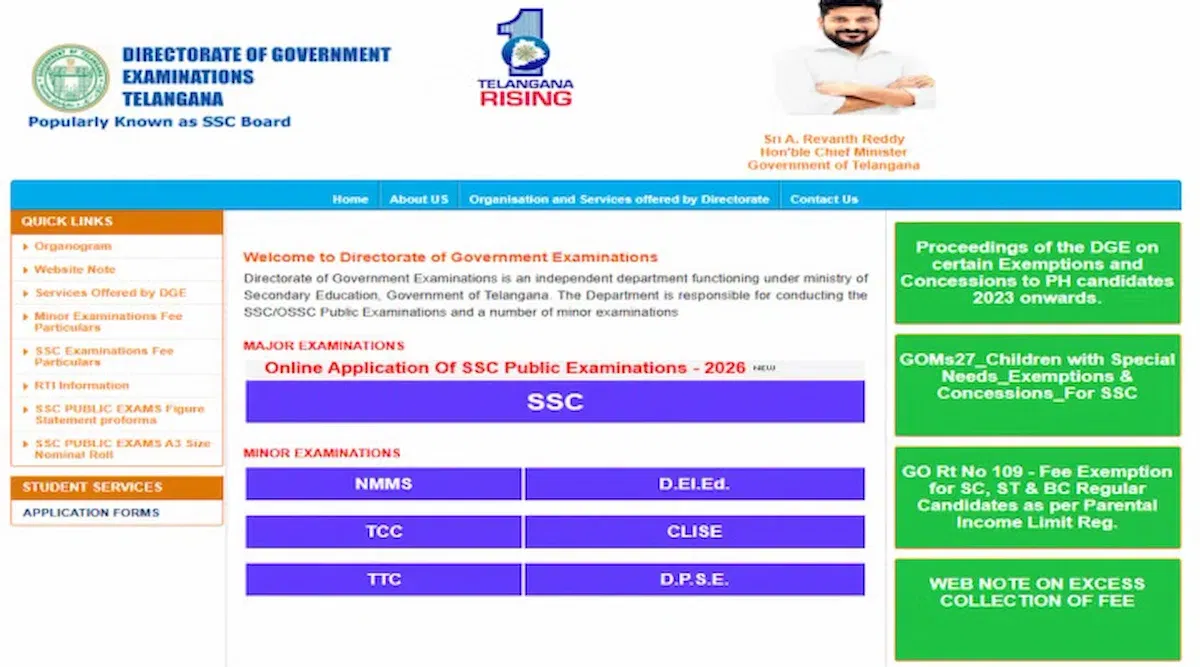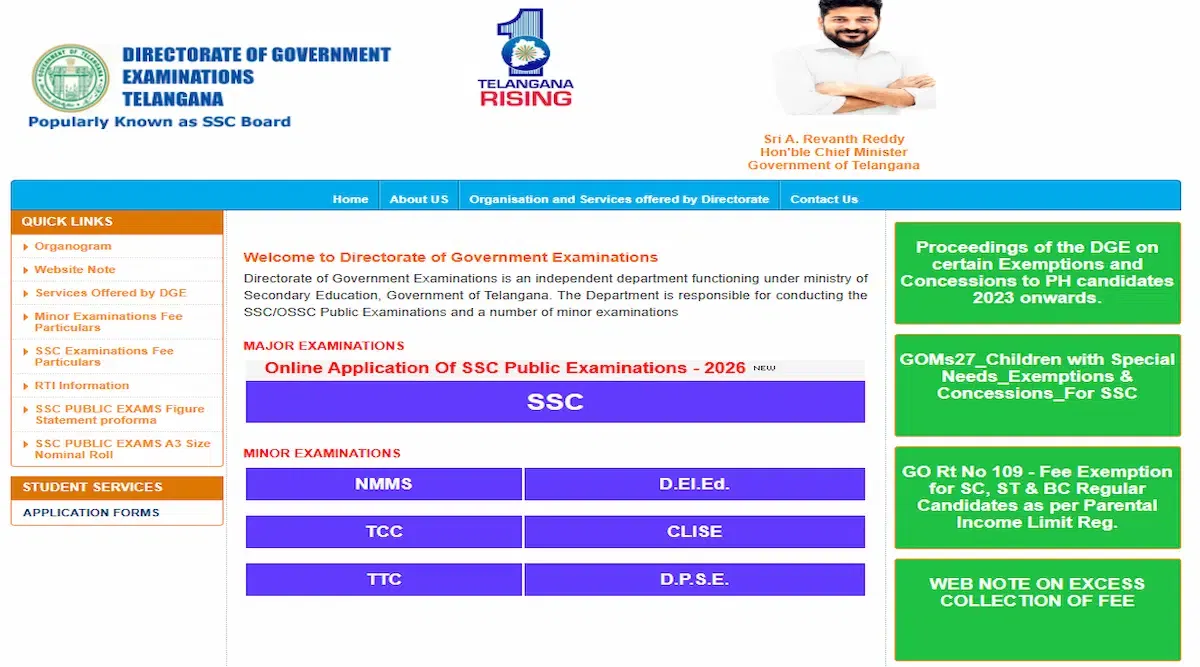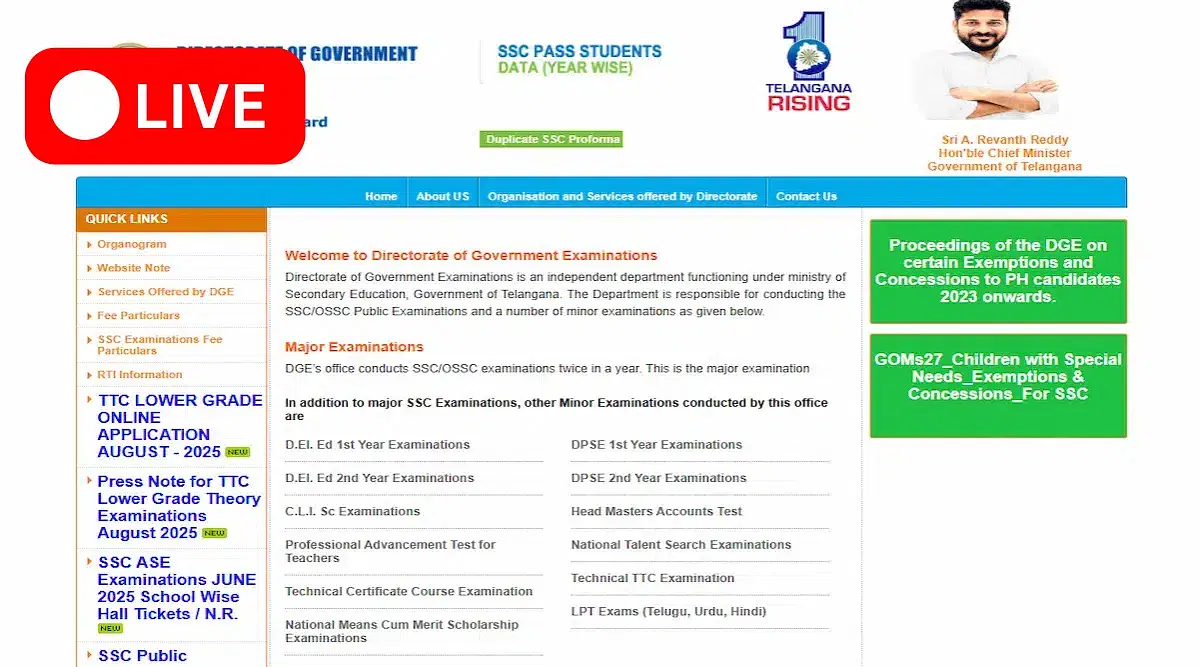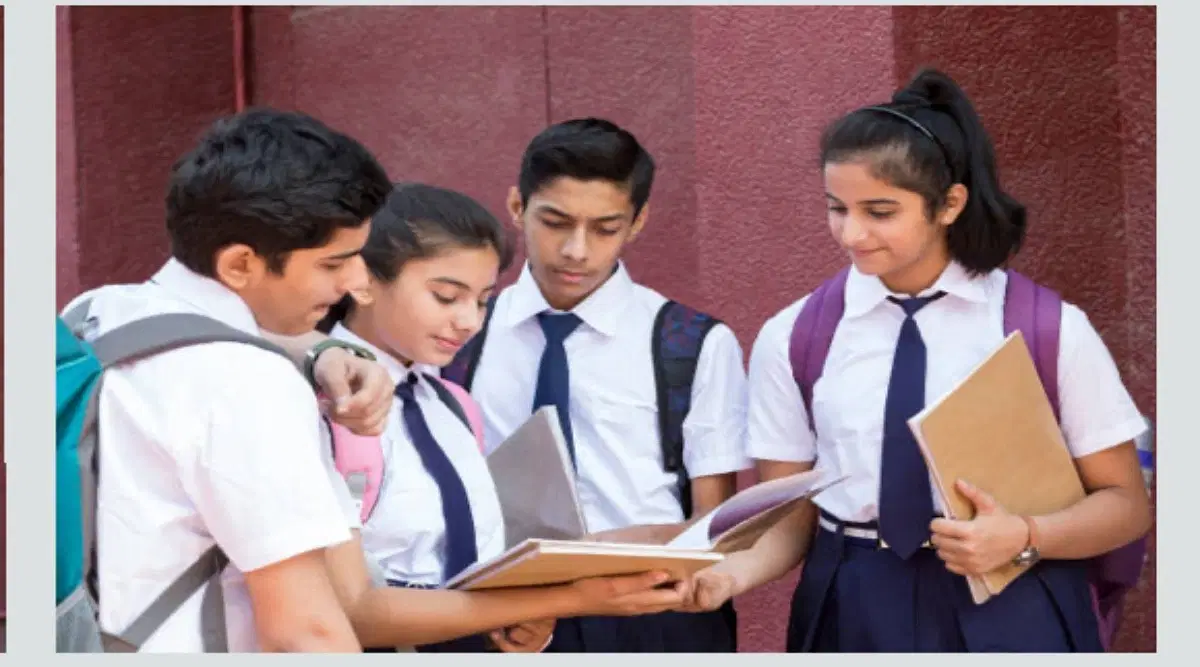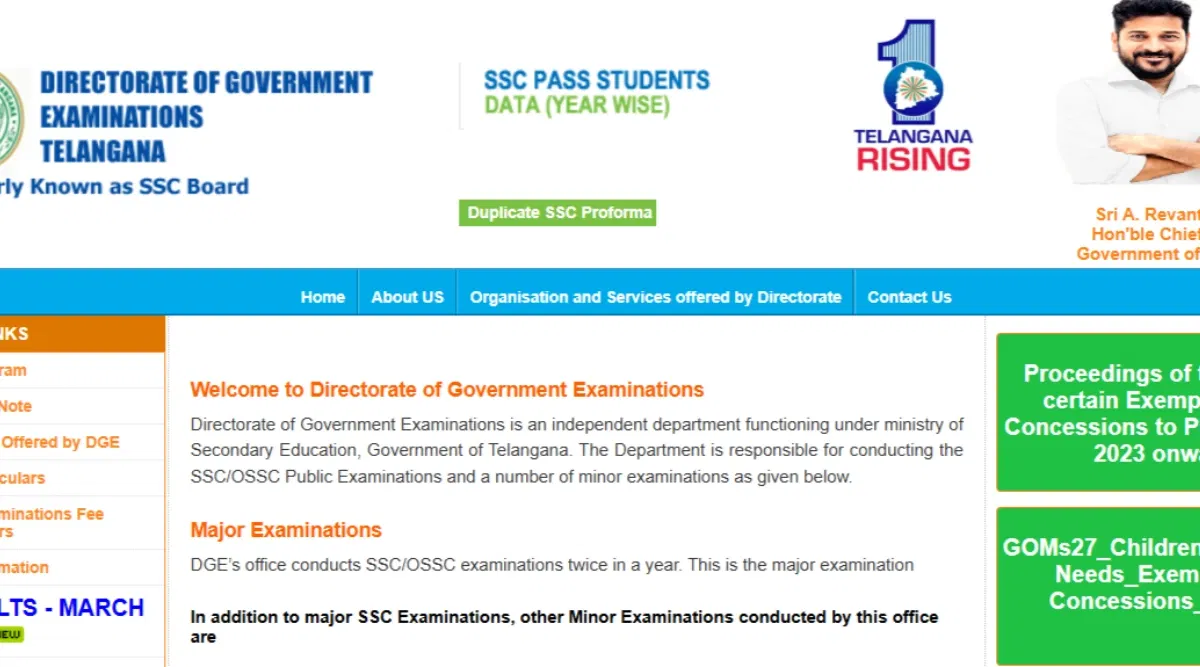TS SSC Social Science Latest Syllabus 2026: Download Latest and Revised Syllabus PDF
Table of Contents
The TS Board Class 10 Social Science syllabus is structured to give students a clear understanding of India’s history, geography, political system, and economy. It is divided into four main parts: History, Geography, Political Science (Civics), and Economics. The history section covers important topics such as the rise of nationalism in India, colonialism, and world wars, while geography focuses on India’s natural resources, agriculture, industries, and population. The syllabus aims to help students understand how social, economic, and political factors shape societies and prepare for TS Board 10th exam 2026 accordingly.
The TS SSC syllabus for Social Science also emphasises map reading, data interpretation, and project-based learning to improve analytical and practical understanding. The political science portion teaches students about democracy, the Indian Constitution, and governance, while economics covers basic concepts like money, globalization, and sustainable development. Through this syllabus, students gain awareness about current affairs and develop critical thinking about the world around them.
TS Board Class 10th Social Science Syllabus
The TS Class 10th Social Science Syllabus must be thoroughly reviewed by students to familiarise themselves with the chapters that will be asked in the TS Board exam for the academic year 2024-25. The TS Board Class 10th Social Science Syllabus is given below.
Part 1: Geography And Economics
Chapter 1: India: Relief Features
Chapter 2: Ideas on Development
Chapter 3: Production and Employment
Chapter 4: Climate in Indian Context
Chapter 5: Indian Rivers and Water Resources
Chapter 6: The Population
Chapter 7: Settlement and Migration
Chapter 8: Rampur: Village Economy
Chapter 9: Globalisation
Chapter 10: Food Security
Chapter 11: Sustainable Development with Equity
Part 2: History and civics
Chapter 12: The world between wars 1900-1950
Chapter 13: National Liberation Movements in the colonies
Chapter 14: National Movement in India–Partition & Independence 1939-1947
Chapter 15: Making of Independent India’s Constitution
Chapter 16: The Election Process in India
Chapter 17: Independent India (The first 30 years 1947-1977)
Chapter 18: Emerging Political Trends (1977-2007)
Chapter 19: Post-War World and India
Chapter 20: Social Movements in our times
Chapter 21: The Movement for the Formation of Telangana State
Chapterwise TS Board Class 10th Social Science Syllabus
Detail of topics covered under each chapter will help the aspiring candidates. Understand what exactly is covered in each chapter and how they should prepare for it.
|
Chapters |
Topics Included |
Part 1: Geography And Economics |
|
|
India: Relief and Features |
Location, Geological background, Major relief divisions, the Himalayas, The Indo-Gangetic plain, The Peninsular Plateau, The Thar Desert, The Coastal plains, and the Islands |
|
Production and Employment |
What development Promises: Different people, Different Goals, Income and other Goals, How to compare Different Countries or States, Income and other Criteria, Public Facilities, Human Development Report—India and its neighbours for 2015 data, Development as progress over time |
|
Indian Rivers and Water Resources |
Sectors of Economy, Gross Domestic Product (GDP), How do we estimate GDP? Changes in the importance of sectors: value of goods and services produced and employment of people, Employment—the working life in India, Organized and unorganised sector employment in India, How to create more and better conditions of employment |
|
Ideas of Development |
Climate and Weather, Climografs, India, Factors influencing climate and weather: Latitude on distance from the equator, Land-water relationship, Relief, Upper atmosphere circulation, Winter, Summer, Advancing monsoon, Retreating monsoon, Global warming and Climate Change, AGW and climate change, Impact of change on India |
|
Climate in India |
The Himalayan Rivers : The Indus system, The Brahmaputra system, The Peninsular Rivers, Water use, Inflows and outflows, Water use in Tungabhadra river basin, Rational and equitable Use of water—a case study or Hivre Bazar of Maharastra, Water as common pool resource |
|
Population |
A survey of our own area (population), What does the census show? , Age structure, Sex Ratio, Literacy Rates, Life Expectancy, Population Growth and Processes of Population Change, Change in population size, Population density |
|
Settlement and Migration |
What is a settlement? How did settlements begin? , Why do settlements change? What types of places formed as settlements? How are settlements organised? , Urbanization in India, Indian settlements in hierarchy, Aerotropoli, jet-age city, Urbanisation problems, Measure and classify migration patterns, Migration in India (census 2001, 2011), Rural-urban migration, Seasonal and temporary Migration, What happens when people migrate? , International migration |
|
Rampur: Village Economy |
The story of Rampur village, Farming in Rampur, Land and other natural resources, Land distribution in Rampur, Organization of Production: a) Land, b) Tools, machines, and buildings, c) Raw material and money, d) Knowledge and enterprise; Labor: for a farm and wages?, Capital: arranging physical and working capital, Surplus or Loss for farmer, Non-farm activities in Rampur, Small-scale manufacturing in Rampur, The shopkeepers of Rampur, Transport |
|
Globalisation |
Production across Countries, Interlinking Production Across Countries, Foreign trade and Integration of markets What is globalization? Factors that have enabled globalization, Technology, liberalization of foreign and foreign investment policy; institutions of global governance; the World Trade Organization (WTO); Impact of Globalization in India, and The struggle for a fair globalization |
|
Sustainable Development with Equity |
Development again, Environment and development, People’s Rights over the Environment, Towards sustainable Development with Equity, At Alternative Public Distribution system |
Part 2: History and civics |
|
|
Food Security |
Food security for the country, Increasing food grain production, Availability of Food grains, Other food items, Access to food, Public Distribution System (PDS), Nutrition status |
|
National Liberation Movements in colonies |
China: two different phases, Establishing the Republic, The Rise of the Communist Party of China, Establishing the New Democracy: 1949-1954, Land Reforms, Vietnam: Against two colonizers, The colonial experience, Emergence of Vietnamese Nationalism, The New Republic of Vietnam, The entry of the US into the War, Nigeria: forming unity against the colonizers, British colonialism and the making of a Nation, Independent and week Democracy Oil, environment and politics |
|
The world between wars 1900 to 1950 |
World Wars, Causes of the two world wars compared, Aggressive nationalism, Imperialism, Secret Alliances, The Armaments Race, Militarism, The special contest of the Second World War, The treaty of Versailles, The League of nations, German Challenge to vengeful domination, The fear or Socialism and the USSR, Consequences of the World Wars: Enormous human cost Democratic principles asserted: Second World War (1939-1945); New balance of power; New International Organizations; Enfranchisement of women, Russian Socialist Revolution, The Great Depression, Rise of Nazism in Germany, The defeat and end |
|
National Movements in India |
Should the war supported by Indians? 1939-42, The Muslim League, The Hindu Mahasabha and the RSS The Pakistan Resolution, Who will make the British Quit India? , The popular upsurge 11946–48, Muslim League and Congress—negotiation for transfer of power, A possible alternative to partition, Partition and migration, Integration of states |
|
Election Process in India |
Election system in India, The Election Commission, Political parties in election, Conduct of elections at various levels, Voting mechanism, NOTA, The need for electoral reforms |
|
First 30 years of Independent India |
First General Elections, Election procedure, One party dominance in political system, Demand for State Reorganization, State Re organization Act, 1956, SRC—State are organization commission, Social and Economic change, Foreign policy and Wars, Anti-Hindi agitation, Green Revolution, Regional Parties and Regional Movements, Bangladesh war, EmergencY |
|
Postwars: World and India |
After world war II, UNO, Cold war (1945-1991), Proxy war, Military alliances, Arms and space race, NAM, West Asian Conflicts, Growth of Nationalism in the Middle East, Peace movements, Collapse of the USSR |
|
Making of India’s Independent Constitution |
Revisiting the Indian Constitution, Nepal Constitution preamble 2007, Japan Constitution preamble 1946, Constituent Assembly Debates, Draft constitution, The vision of the constitution, Debate on Fundamental Rights, The Constitution Today |
|
Emerging Political Trends |
Return of Democracy after emergency, Elections—1977—End of Emergency, Some important parties of 1970s: BLD, Congress, CPI (M), DMK, Jan Sangh, SAD, Regional party - Telangana, Assam movement, The Punjab Agitation, The new initiatives of Rajiv Gandhi Era, Rise of Communalism and Corruption in High places |
|
Social Movement in our times |
Civil Rights and Other Movements of 1960s, Human Rights Movements in the USSR, Anti-nuclear and Anti-War Movements, Globalization, marginalized people and environmental movements Greenpeace Movement in Europe, Bhopal Gas Disaster-related movements, Silent Valley Movement 1973-85, Movement against dams—Narmada river, Movement of women for Social Justice, Aadavallu Ekamaite, Social mobilization on human rights, Meria Paibi Movement |
|
The movement for the formation of Telangana |
The merger of Hyderabad State with India, The Gentlemen’s Agreement, Mulki Rules, 1969 Agitation, Movements in 1990s, In the process of achieving Telangana, Withdrawal of announcement |
TS Board Class 10th Social Science Syllabus: PDF Download
Candidates can click on the link given below to download the TS Board Class 10th Social Science Syllabus PDF:
|
TS Board Class 10th Social Science Syllabus PDF |
How to Download TS Board Class 10th Social Science Syllabus
Downloading the TS SSC Social Science syllabus 2024-25 is straightforward. The Social Science syllabus can be obtained by students by following the procedures outlined below.
- Students can visit the official Telangana Board website at https://www.bsetelangana.co.in/. On the homepage, students can access the Quick Links.
- The Telangana SSC syllabus will be provided to students. Select it by clicking on it.
- The TS SSC Social Science Syllabus 2024-25 PDF can be downloaded.
Preparation Tips for TS Board Class 10th Social Science Syllabus
The following are some indispensable preparation strategies for social science. The guidelines can be reviewed by students to ensure that they are adhered to in order to achieve high scores on the board exams.
- Finish the TS SSC Social Science Syllabus - The initial stage is to finish the Social Science syllabus. The students are responsible for ensuring that they have thoroughly reviewed all of the topics outlined in the syllabus. Students will be capable of responding to the enquiries given their comprehensive understanding of the syllabus.
- Consult the textbooks: Students are advised to consult the textbooks that have been prescribed by the Telangana board in order to prepare for their board exams. The topics are easily comprehensible to students due to the straightforward language used in these publications.
- Sample Question Paper Solving: Students are advised to tackle the TS SSC Social Science Sample Question Papers after concluding the syllabus. Students are furnished with sample papers in PDF format. The sample papers provide students with an understanding of the exam pattern, marking scheme, and categories of queries.
- Practice Writing Answers: Students are advised to compose responses when addressing the sample papers. Students will be able to enhance their quickness by consistently composing responses. In addition, it will help students understand the word limit of their responses about the marks they have been allotted.
- Regularly Revise: After the syllabus has been finalised, students should divide it into smaller components. They have the option of reading one chapter per day and reviewing all of the significant chapters.
